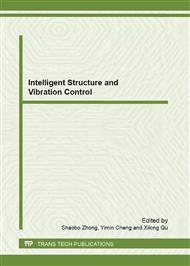[1]
X.J. Wan: Beyond topical similarity: a structural similarity measure for retrieving highly similar documents, Knowledge and Information Systems, 15(2008), pp.55-73.
DOI: 10.1007/s10115-006-0047-1
Google Scholar
[2]
Y. Zhao, W. Halang, X. Wang: Rough ontology mapping in E-Business integratio, Studies in Computational Intelligence, 37(2007), pp.75-93.
DOI: 10.1007/978-3-540-37017-8_3
Google Scholar
[3]
K. de Souza, J. Davis: Aligning ontologies and evaluating concept similarities, in: On the Move to Meaningful Internet Systems 2004: CoopIS, DOA, and ODBASE, Springer Berlin (2004), pp.1012-1029.
DOI: 10.1007/978-3-540-30469-2_12
Google Scholar
[4]
G. Stumme, A. Maedche: FCA-MERGE: bottom-up merging of ontologies, in: Proc 7th Intl. Conf. on Artificial Intelligence, Seattle, WA, USA, (2001), pp.1-6.
Google Scholar
[5]
T. Hsieh, K. Tsai, C. Chen et al.: Query-based ontology approach for semantic search, in: 6th International Conference on Machine Learning and Cybernetics, Hongkong, China (2007), pp.2970-2975.
DOI: 10.1109/icmlc.2007.4370656
Google Scholar
[6]
M.A. Rodriguez, M.J. Egenhofer: Determining semantic similarity among entity classes from different ontologies, IEEE Transactions on Knowledge and Data Engineering, 15(2003), pp.442-456.
DOI: 10.1109/tkde.2003.1185844
Google Scholar
[7]
E. Sanchez, T. Yamanoi: Fuzzy ontologies for the semantic web, Lecture Notes in Computer Science, LNAI 4027, Springer Berlin (2006), pp.691-699.
DOI: 10.1007/11766254_59
Google Scholar
[8]
Q.T. Tho, S.C. Hui, A.C.M. Fong, T.H. Cao: Automatic fuzzy ontology generation for semantic web, IEEE Transactions on Knowledge and Data Engineering, 18 (2006), pp.842-856.
DOI: 10.1109/tkde.2006.87
Google Scholar
[9]
R. Lau, Y.F. Li, Y. Xu: Mining fuzzy domain ontology from textual databases, IEEE/WIC/ACM International Conference on Web Intelligence, Silicon Valley, USA (2007), pp.156-162.
DOI: 10.1109/wi.2007.20
Google Scholar
[10]
W. Zhou, Z.T. Liu, Y. Zhao: Ontology learning by clustering based on fuzzy formal concept analysis, in: 31st Annual International Computer Software and Applications Conference, Beijing, China (2007), pp.204-210.
DOI: 10.1109/compsac.2007.161
Google Scholar
[11]
J.M. Ma, W.X. Zhang, S. Cai: Variable threshold concept lattice and dependence space, Lecture Notes in Computer Science, LNAI 4223, Springer Berlin (2006), pp.109-118.
DOI: 10.1007/11881599_13
Google Scholar
[12]
X. Wang, W.X. Zhang: Relations of attribute reduction between object and property oriented concept lattice, Knowledge-Based Systems, 21(2008), pp.398-403.
DOI: 10.1016/j.knosys.2008.02.005
Google Scholar
[13]
A. Tversky: Features of similarity, Psychological Review, 84(1977), pp.327-352.
Google Scholar
[14]
L.D. Wang, X.D. Liu: A new model of evaluating concept similarity, Knowledge-Based Systems, 21(2008), pp.842-846.
DOI: 10.1016/j.knosys.2008.03.042
Google Scholar


